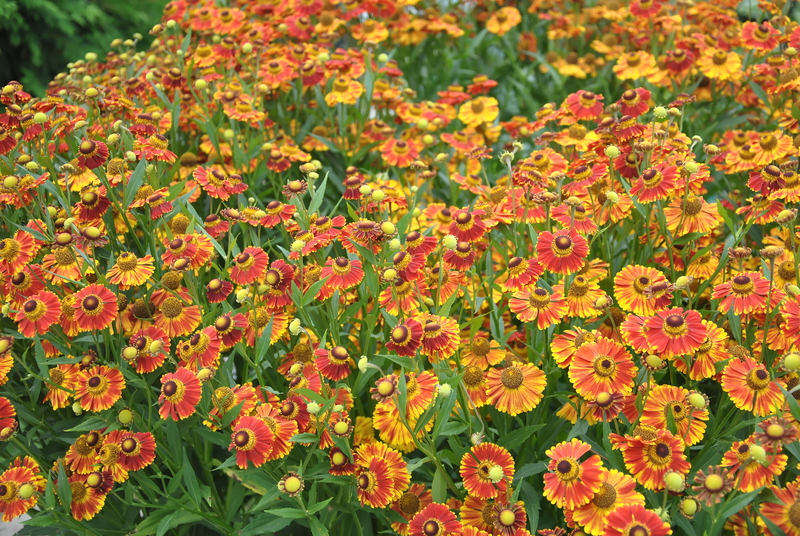Creating Eco-Havens: Gardens as Climate Change Solutions
Posted on 23/08/2025
Creating Eco-Havens: Gardens as Climate Change Solutions
Climate change looms as one of the greatest threats to our planet, impacting everything from the air we breathe to the food we eat. But did you know that your own backyard--or even a tiny balcony--can be a powerful force for environmental good? Gardens as climate change solutions are gaining recognition across the globe. By transforming ordinary spaces into thriving eco-havens, individuals and communities can actively contribute to healing the earth.
Understanding the Impact of Climate Change
Before diving into the practicalities of eco-gardening, it's important to appreciate how climate change disrupts natural systems. From rising temperatures and extreme weather events to the loss of biodiversity and worsening air pollution, these challenges require innovative, nature-based solutions. That's where gardens designed for climate resilience come into play.
- Global warming and its devastating consequences on ecosystem health
- Loss of pollinator populations due to habitat destruction
- Urban heat islands making cities increasingly unlivable
- Severe storms and flooding, exacerbated by soil erosion and deforestation

Gardens as Effective Climate Change Solutions
Eco-friendly gardens serve as more than just beautiful retreats--they are mini ecosystems acting as climate change buffers. Let's explore the powerful ways in which your garden can serve as a climate ally:
1. Carbon Sequestration
Plants naturally remove carbon dioxide (CO2) from the atmosphere, storing it in their tissues and in the soil. Creating a lush and diverse garden maximizes this carbon-capturing process, making a meaningful dent in greenhouse gas emissions.
- Trees and shrubs are particularly effective carbon "sinks"
- Perennial plants keep carbon stored year-round
- Healthy soils enriched with organic matter can lock away more carbon
2. Habitat Restoration and Biodiversity
Habitat loss is a key driver of climate instability. By cultivating a biodiverse garden, you help restore homes for vital species--like bees, butterflies, birds, and amphibians--supporting the web of life that keeps ecosystems balanced.
- Plant native species for local wildlife
- Include pollinator-friendly flowers
- Add water sources and shelter for small animals
- Avoid pesticides to protect beneficial insects
3. Urban Cooling and Mitigating the Heat Island Effect
Cities trap heat due to concrete and asphalt, leading to higher local temperatures, known as the urban heat island effect. Gardens and green roofs can:
- Cool down streets and buildings through shade and evapotranspiration
- Lower energy usage for air conditioning
- Improve air quality by filtering pollutants
4. Flood Reduction and Water Management
Climate change brings more intense rainfall and heightened flood risks. Rain gardens and permeable landscaping allow rainwater to soak into the ground, reducing runoff and replenishing groundwater. Key strategies include:
- Building rain gardens with water-loving plants
- Using permeable paving materials
- Collecting and reusing rainwater for irrigation
Designing an Eco-Haven: Best Practices for Climate-Resilient Gardens
To maximize the climate benefits of your garden, consider the following approaches rooted in sustainability and resilience.
1. Choose Climate-Appropriate, Native Plants
Native plants thrive in local conditions, require less water and fertilizer, and provide superior habitat for wildlife. When designing your garden:
- Prioritize drought-tolerant varieties in hot, dry regions
- Choose plants resilient to pests and diseases
- Opt for diversity--different shapes, colors, bloom times
Tip: Check with local nurseries or botanical gardens for guidance on selecting the best native plants for your eco-haven.
2. Build Healthy, Organic Soil
Soil health is fundamental to the fight against climate change. Healthy soils not only store more carbon, but also retain water and resist erosion.
- Use organic compost to enrich soil naturally
- Practice no-till or reduced-till gardening to protect soil structure
- Apply mulch to preserve moisture and nurture soil life
3. Implement Water-Wise Gardening
With increasing droughts and unpredictable rainfall, efficient water use is essential in eco-garden design.
- Install drip irrigation systems to minimize waste
- Grow drought-tolerant or xeriscape plants
- Harvest rainwater in barrels for use during dry spells
Remember: Water-wise gardens are not just climate-adaptive but also cost-effective in the long run!
4. Embrace Wildlife and Enhance Biodiversity
Fostering wildlife is at the heart of an eco-haven garden:
- Leave some leaf litter and dead wood for beetles and birds
- Install bird boxes, bee hotels, and small ponds
- Plant nectar-rich flowers for pollinators
5. Reduce Chemical Inputs
Pesticides and synthetic fertilizers harm beneficial insects, pollute waterways, and release greenhouse gases during manufacturing. Consider organic gardening techniques for a healthier, climate-positive garden.
6. Encourage Community Involvement
Eco-havens can extend beyond your own garden. Community gardens, urban green spaces, and school gardens magnify climate benefits while fostering social connection and education.
- Start a local gardening club focused on sustainability
- Join tree-planting drives and native plant swaps
- Advocate for green infrastructure in your municipality
Advanced Strategies for Climate-Resilient Gardening
For those looking to take their eco-gardens further, here are advanced strategies that yield even greater climate benefits.
1. Permaculture Principles
Permaculture integrates ecology, agriculture, and design for self-sustaining landscapes:
- Design gardens to mimic natural ecosystems--with multiple layers of plants
- Use swales and contouring to manage water flow
- Integrate edible plants to boost food security
2. Edible Eco-Gardens and Urban Agriculture
Growing your own food cuts food miles and reduces carbon footprints.
- Create raised beds for vegetables and herbs
- Include fruit trees and berry bushes for perennials
- Compost food scraps to cycle nutrients back into the soil
3. Green Roofs and Living Walls
Even in dense urban settings, climate-friendly gardening is possible:
- Install a green roof to insulate buildings and absorb stormwater
- Create living walls with a vertical array of plants, improving air quality
- Transform balconies with container gardens and native flowering plants
These creative solutions turn even the smallest space into an eco-haven!
The Broader Benefits: Why Eco-Haven Gardens Matter
While the environmental perks are clear, eco-haven gardens offer a host of additional benefits for individuals and communities:
- Mental health boost: Gardening reduces stress, anxiety, and depression
- Physical activity: Tending a garden gets you moving in fresh air
- Community building: Shared green spaces foster social ties and neighborhood pride
- Educational opportunities: Gardens teach children vital lessons about ecology and sustainability
- Improved food security: Homegrown produce reduces reliance on distant supply chains
Overcoming Challenges and Misconceptions
Some may hesitate to transform their yards due to misconceptions about eco-gardening:
- "It's expensive"--Many climate-friendly practices, such as composting and mulching, save money.
- "It takes too much time"--Choose low-maintenance native plants for self-sustaining beauty.
- "It won't make a difference"--Collective action across communities delivers immense results for the planet.
With the right knowledge, tools, and mindset, anyone can participate in creating gardens as climate change solutions.
Getting Started: Steps for Your Own Eco-Haven Garden
- Assess your space: Observe sunlight, soil, drainage, and microclimates.
- Set climate-friendly goals: Carbon capture, biodiversity, urban cooling, or food production.
- Plan your garden: Sketch layouts, select native and drought-tolerant plants.
- Build soil health: Use compost and mulch, minimize disturbance.
- Cultivate with care: Water wisely, avoid chemicals, provide habitat features.
- Share and expand: Teach others, join community efforts, advocate for green spaces.

Conclusion: Small Gardens, Big Impact
Climate change can feel overwhelming, but the solution often starts close to home. Every eco-haven garden--big or small--adds up to transformative collective action. These green sanctuaries sequester carbon, shelter wildlife, and cool urban landscapes. By embracing gardens as climate change solutions, we not only nurture the planet but also enrich our own lives and communities. Don't underestimate the power of planting a seed--start your eco-haven today for a greener tomorrow!

